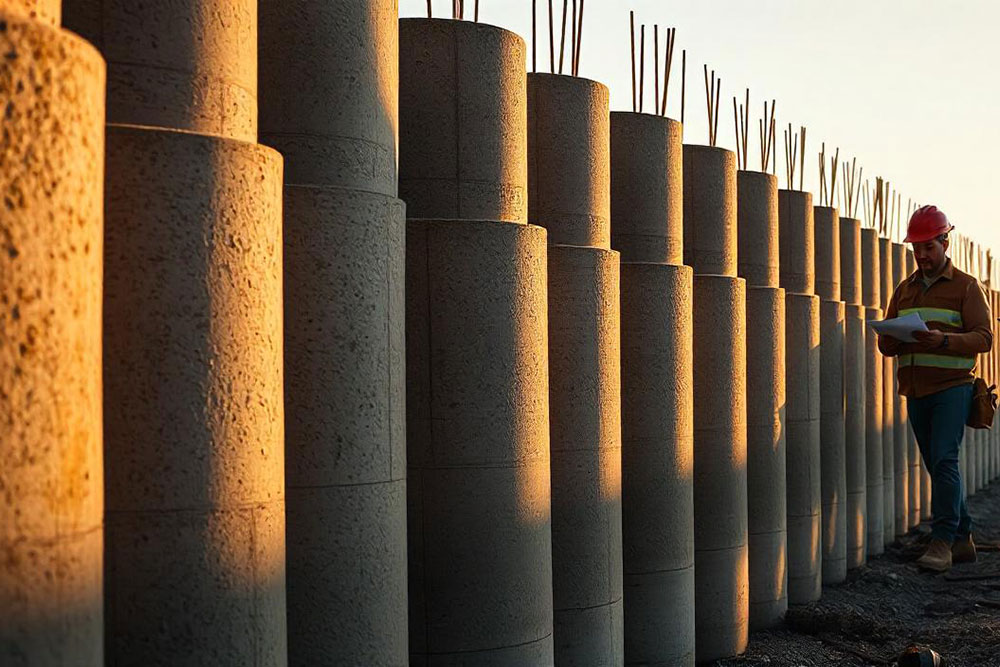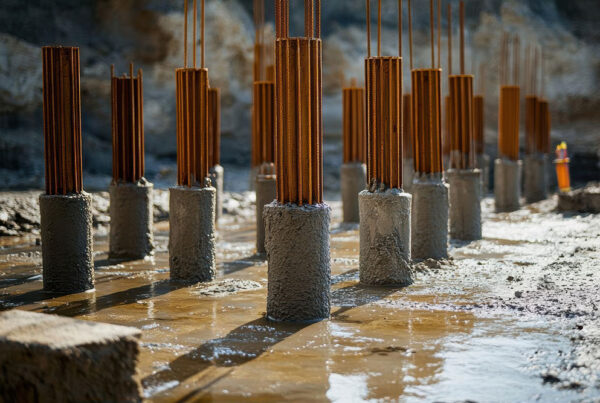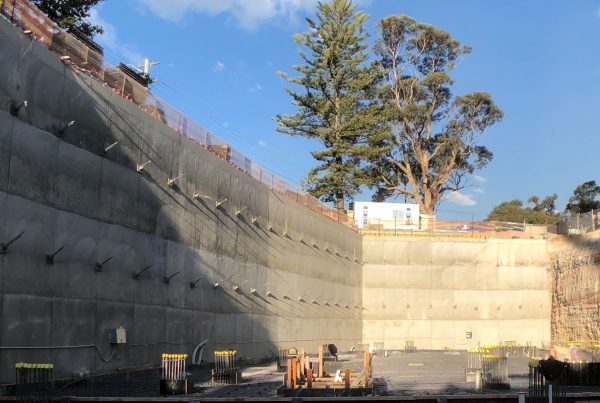Contiguous pile walls are a widely used earth retention solution in construction, especially for deep excavation projects like basements, tunnels, and underground parking structures. The piles are placed close together with small gaps, forming a near-continuous barrier that provides stability and prevents soil collapse. The success of a contiguous pile wall depends not only on the design but also on the materials used in its construction. This article explores the key materials involved in building contiguous pile walls.
1. Reinforced Concrete Piles
One of the most common materials used in contiguous pile walls is reinforced concrete. These piles are cast in situ using a concrete mix that is designed to withstand significant loads and pressures. Reinforced concrete piles offer high strength and durability, making them ideal for providing long-term structural support. The use of steel reinforcement within the concrete increases its load-bearing capacity and resistance to bending forces.
2. Steel Piles
Steel piles are another popular option for contiguous pile wall construction. These piles are typically driven into the ground using pile drivers and are particularly useful in areas where the soil conditions are less stable. Steel piles offer excellent tensile strength and can be used in situations where the piles are subjected to large lateral forces. Additionally, steel piles can be treated with protective coatings to prevent corrosion, making them suitable for projects in marine or corrosive environments.
3. Timber Piles
Although less commonly used in modern construction, timber piles are still employed in certain projects where lightweight and cost-effective solutions are needed. Timber piles are particularly useful in temporary works or in areas where access for larger equipment is restricted. However, timber piles are generally less durable than concrete or steel and are susceptible to decay, so they are typically used in less demanding applications.
4. Reinforcement Steel Bars
The use of reinforcement steel bars, also known as rebar, is essential in contiguous pile walls to improve the structural strength of concrete piles. These steel bars are placed inside the piles before the concrete is poured, providing additional support and enhancing the pile’s ability to resist tensile forces. Rebar is often used in combination with other materials like concrete to ensure that the wall can handle the pressures exerted by the surrounding soil.
5. Grout and Cement Mixes
Grouting is an important component in the construction of contiguous pile walls. It is used to fill gaps between the piles and to strengthen the overall wall structure. Grout, typically a mixture of water, cement, and sand, helps to create a more impermeable and cohesive wall. Grouting can also be used to prevent water seepage, which is particularly important in excavation projects where groundwater levels are high.
6. Waterproof Membranes
In projects where water retention is a concern, waterproof membranes are often used in combination with contiguous pile walls. These membranes are applied to the exterior of the wall to prevent water infiltration, especially in areas with high groundwater levels or near bodies of water. Waterproofing is crucial in ensuring the longevity of the structure and protecting it from water-related damage over time.
Conclusion
The construction of contiguous pile walls relies on a combination of durable and high-quality materials such as reinforced concrete, steel piles, timber piles, and reinforcement steel bars. These materials are selected based on the project’s requirements, soil conditions, and environmental factors. By choosing the right materials, construction professionals can ensure that the contiguous pile walls provide the necessary support and stability for complex excavation and foundation projects.






